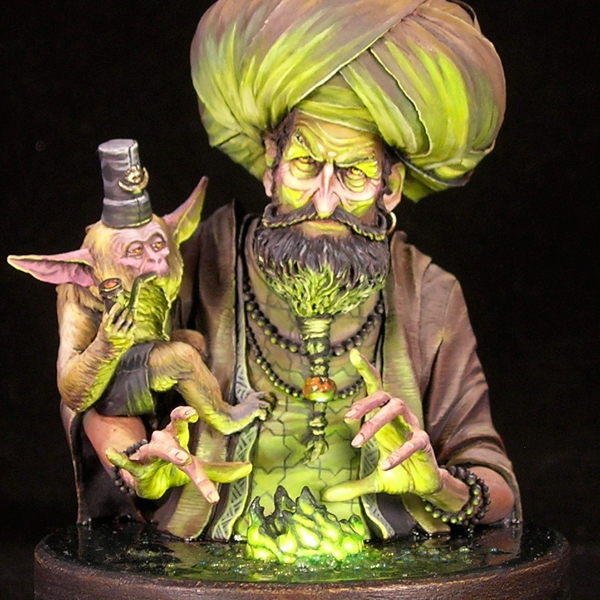One of my favorite effects in miniature painting is when the artist uses paint to create the illusion of a light source which is not actually there. These lighting effects can be extremely fun and eye-catching, but they can also be very tricky to pull off. In this tutorial I will outline a set of rules which, when followed, will make your depictions of light sources much more believable and impactful. I will also show a step-by-step painting process which is one way you can follow these rules and achieve a good result.
A quick note on terminology and history.
Object-source lighting, or OSL, refers to when one of the light sources depicted by your painting is an actual object on the figure or its base, such as a torch, lamp, or glowing sword. Lighting effects is a more general term I use to cover any use of paint to suggest a light source which is present in the scene, but may be “off camera” rather than being depicted on the miniature.The miniature painting community was introduced to OSL by Slayer-Sword-winning painter Victoria Lamb, whose creations The Rescue of Sister Joan and Firey Angel are two of the best examples of this effect.
To the extent that miniature painting is a genre of art, there are no hard-and-fast rules. However, when painting a miniature to simulate the behavior of a light source, you are trying to create an illusion of something which is not really there—the light that you imagine being cast on your miniature, from an object it is holding or from its environment. In order to create a convincing illusion, you must follow the same physical laws that govern how light behaves, or you risk spoiling the illusion because something will look “off” to the viewer. These rules about how light behaves are part of how you understand the world, but are often instinctive and subconscious. By taking these rules and making them explicit, it becomes easier to see when a lighting-effect illusion is not working, understand why it is not working, and fix it.
